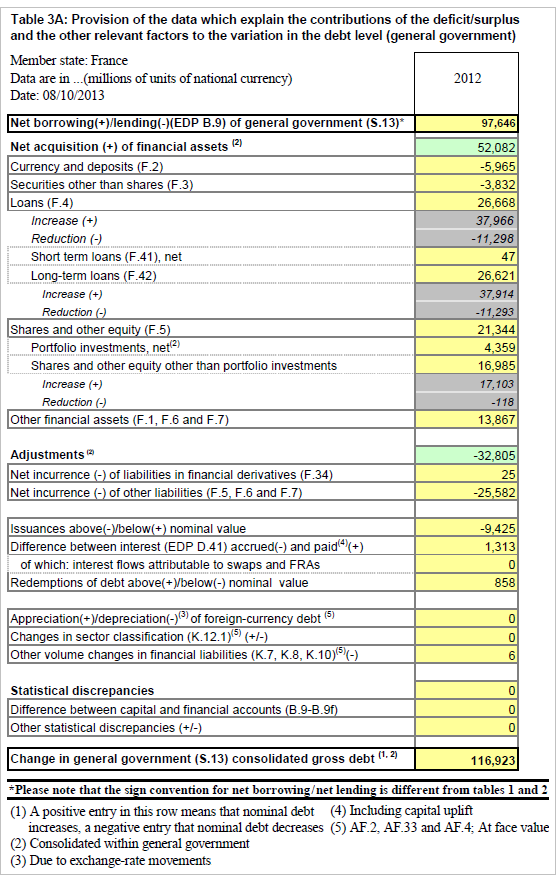The Other Deficit
Post on: 20 Апрель, 2015 No Comment

Conspicuously absent in the presidential campaign and debates has been any sense of urgency about the federal budget deficit. Neither candidate promises to do more than halve it within four years. And in all likelihood, neither’s budget plan would do even that. But there is a looming issue that will compel whoever is elected on November 2 to confront the budget deficit—and perhaps confront it suddenly and painfully. It’s the other deficit. It’s our current account deficit, which essentially equals the savings we send to foreigners minus the savings foreigners send to us. The Bureau of Economic Analysis reported last month that the current-account deficit surged to $166 billion in the second quarter, or $665 billion on an annual basis. That’s 5.7 percent of GDP—an unprecedented rate of borrowing that many economists fear may lead to a crash in the dollar and in financial markets. And with record monthly trade deficits in the headlines, the gap could widen even further next quarter. A large and widening current-account deficit is what happens when a low-savings country runs large and widening budget deficits. It cannot continue much longer.
Twin Deficits
Let’s start with why budget deficits matter. Economically, the problem is that they absorb national savings and crowd out productive investment. Gregory Mankiw, the author of America’s best-selling economics textbook and chairman of President Bush’s Council of Economic Advisers, explains it this way. “Because investment is important for long-run economic growth, government budget deficits reduce the economy’s growth rate.†In other words, they can slow and even halt the steady rise in material living standards that has always nourished the American Dream. This “crowding out†wouldn’t matter as much if American businesses and households were prodigious savers. But in fact, the United States has long had the lowest private savings rate of all major industrial nations—and the rate is falling, not rising.
So we arrive at our current-account deficit, the federal deficit’s “twin.†With federal borrowing crowding domestic investment out of capital markets, the only way the United States has been able to maintain even minimally adequate levels of domestic investment is to borrow from abroad. That’s what we did in the 1980s and have been doing again since the late 1990s. Some wonder what the problem is. Maybe the rest of the world just thinks we’re a great place to park their money. So long as borrowing from abroad boosts investment, what’s the difference who owns the factory? The productivity of American workers will rise either way. The answer is that it matters a great deal. Whatever America borrows it must eventually pay back—or else incur a permanent debt service charge. Either way, future U.S. living standards will suffer. Like everyone else, foreigners expect a return on their capital. To say it doesn’t matter if Americans own their own economy is like saying that there is no difference between owning the family farm and being a sharecropper. Then there is the question of sustainability. Never before has our current account deficit been nearly so large. Never before has our net indebtedness to other countries been nearly so large. Incredibly, the U.S. current-account deficit now absorbs, directly or indirectly, two-thirds of the total reported current-account surpluses run by every other nation. The recent accumulation of net U.S. financial liabilities to foreigners is alarming—from roughly zero twenty years ago to $2.4 trillion today. With our annual net borrowing from abroad now running at $2 billion a day, the urgent question is how suddenly, or even catastrophically, this massive foreign lending will stop.
Day of Reckoning
The adjustment could be gradual. When foreigners have accumulated all the U.S. assets they care to own, rising interest rates and a falling dollar might steadily narrow the current-account deficit—maybe not all the way to zero, but enough to stabilize the foreign holdings as a share of the U.S. economy. At that point, Americans would have to get by with less investment and slower economic growth.
As bad as it is, this so-called soft landing is the very best outcome we can hope for so long as America’s future fiscal path and national savings rate remain unchanged. It is quite possible, in the opinion of many economists, that the dynamic of gradual adjustment will at some point be short-circuited by market psychology—triggering a sudden loss of confidence, followed by financial and economic crisis.
How might this crisis unfold? Let’s assume that global investors gradually lose faith that the United States will ever rein in its federal deficit. This would make it ever more certain, in their eyes, that the value of their dollar assets will sooner or later be eroded by rising inflation, higher interest rates, and a stock market decline. And this in turn could easily lead to a get-out-the-door-first mentality—in short, to a run on the dollar.
What might trigger the crisis? Almost anything could push currency markets over the tipping point—a bad day on Wall Street, a disappointing employment report, a testy remark by a central banker. Once the dollar “overshoots†in a large and sudden plunge, inflation and interest rates may jump and financial markets may ratchet downward. Reverberations in the “real†economy could then follow, including a loss of consumer confidence, a severe contraction in export sectors, and ultimately global recession. Soaring interest rates will cause the federal deficit to jump, as Treasury bond buyers demand much higher returns.
How likely is this scenario? No one really knows. But few policy leaders, financial traders, and economists believe that the U.S. current-account deficit is sustainable much longer than five more years and nearly all worry that the inevitable readjustment may be a “hard†rather than a “soft†landing. Most say there is a very real risk of full-blown crisis. Ex-Fed Chairman Paul Volcker estimates that the odds are something like 75 percent. Ex-Treasury Secretary Bob Rubin talks of a “day of serious reckoning.â€
A Convenient Arrangement
There are, to be sure, many skeptics who don’t believe we need to worry about a hard landing. Some say that America is in a privileged position, since global investors have no choice but to invest in dollar assets. Unfortunately, this is not true. Global investors currently hold a much smaller share of their assets in euros or yen than the European or Japanese share of world GDP. If confidence in the stability of the dollar is shaken, investors could opt to increase this percentage—or switch to gold. Central bankers in East Asia are talking openly about a move in this direction; some Asian traders go so far as to predict that the Chinese yuan will be the world’s dominant reserve currency by the mid-21st century.

The skeptics also tell us not to worry because governments around the world would never allow a crisis to happen. U.S. demand for plentiful credit is matched by foreign demand for plentiful exports—and so foreign governments would intervene massively to support the dollar. They might well try. But once the mood of global investors changes decisively, there is really not much governments can do. The magnitude of tradable assets around the world (global stock markets alone are now capitalized at over $30 trillion) would overwhelm the efforts of even the most dedicated central bankers or treasurers.
The skeptics are right about one thing: Most governments have no great desire to correct the current imbalance of global trade and finance. Foreign leaders are as eager to stimulate their economies with a bustling export sector as U.S. political leaders are to keep running budget deficits at low interest rates. It’s an ugly but politically convenient arrangement.
Economic Destiny
By now, our economic destiny may depend as much on what foreign political leaders do with their dollar holdings as on any policy we can pursue alone. If that fact bothers us, we should have given it more thought years ago when we first embarked on a long-term path of falling national savings and rising federal deficits. Given that path, the birth of a large current-account “twin†was almost inevitable. Fifty years ago, our nation was the largest net lender on earth. Twenty-five years ago, our global assets still exceeded our liabilities. Today, our net investment position is sinking below minus $3 trillion. We may hope that the rest of the world will go on lending us money forever. That, however, cannot be.
The bottom line is simple. Sooner or later, the next President will have to confront the budget deficit. If he decides to do sooner, at the beginning of his term, he could strengthen global confidence in U.S. financial markets and the dollar. Fiscal reform could then proceed at a measured pace. If he waits until markets crash, he will have to confront the budget deficit anyway—but this time the adjustments will be sudden and painful.
FACING FACTS AUTHORS: Neil Howe and Richard Jackson CONCORD COALITION EXECUTIVE DIRECTOR: Robert Bixby














